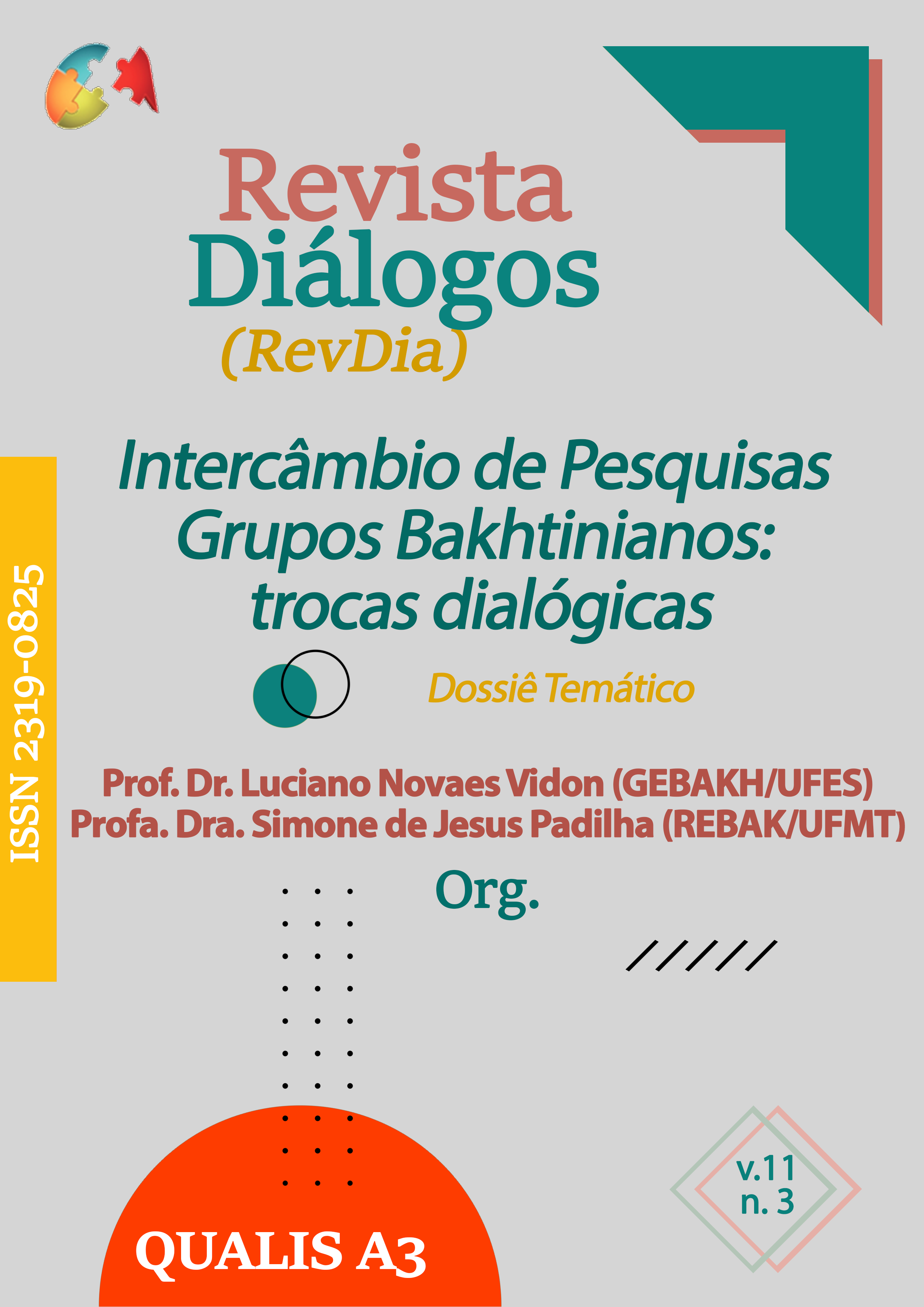Análise cronotópica de dois anúncio publicitários (1956 e 2019) da marca de cerveja Budweiser.
Keywords:
Análise Dialógica do Discurso, Enunciado Concreto, Cronotopo, Gêneros do discursoAbstract
This article aims to analyze the construction of the image of women in advertising pieces from Budweiser published in two distinct chronotopes. For this purpose, we selected an advertisement from this brand that was aired in the media in 1956, and another one in 2019. The selection of this corpus was based on the aesthetic similarity between the two advertisements, with the 2019 ad being a response to the 1956 ad and presenting a new way of seeing women. In the analysis, we found that, despite their similarities, the ads present different valuations. While the first ad portrays a woman subservient to men, the second one depicts the female figure as independent and free to make her own choices. Both ads exhibit social characteristics typical of their respective chronotopes, and in a responsive move, the second ad updates the brand's conception of women's role in modern society, viewing them as potential consumers of their product, a thought that was little or not acceptable in the 1950s. It is also worth noting that the advertiser sought to emphasize the transformation in evaluative appreciations perceived in the statements, as the enunciator, when producing the 2019 ad, chose to maintain the compositional structure and style observed in the 1956 ad.
References
BAKHTIN, M.M. Estética da Criação Verbal. Introdução e tradução do russo Paulo Bezerra. São Paulo: Martins Fontes, 2011.
BAKHTIN, M.M. Os gêneros do discurso. Org., trad., porsf., notas de Paulo Bezerra. Notas da edição russa Serguei Botcharov. São Paulo: Editora 34, 2016.
BAKHTIN, M.M. Teorias do romance II: as formas do tempo e do cronotopo. Trad. Paulo Bezerra. 1ª ed. São Paulo: Editora 34, 2018.
BEMONG, N; BORGHART, P. A teoria bakhtiniana do cronotopo literário: reflexões, aplicações, perspectivas. In.: BEMONG, N; BORGHART, P; DOBBLEER, M; DEMOEN,
K; TEMMERMAN, K; KUNEN, B. (Orgs.). Bakhtin e o cronotopo: reflexões, aplicações, perspectivas. Tradução de Oziris Borges Filho, et al. São Paulo: Parábola Editorial, 2015. p. 16-32.
BRAIT, B. Do que rimos com Bakhtin? In: BRAIT, Beth; PISTORI, Maria Helena Cruz; FRANCELINO, Pedro Farias. (Orgs). Linguagem e conhecimento (Bakhtin/ Volóchinov/ Mediédev). Campinas, SP: Pontes Editores, 2019.
BRAIT, B.; MELO, R. de. Enunciado/enunciado concreto/enunciação. In: BRAIT, B. (org.). Conceitos-chave. São Paulo: Contexto, 2017.
COLLINGTON, T. O cronotopo e o estudo da adaptação literária: o caso de Robinson Crusoé. In.:BEMONG, N; BORGHART, P; DOBBLEER, M; DEMOEN, K;
TEMMERMAN, K; KUNEN, B. (Orgs.). Bakhtin e o cronotopo: reflexões, aplicações, perspectivas. Tradução de Oziris Borges Filho, et al. São Paulo: Parábola Editorial, 2015. p. 220-239.
DEL PRIORI, M. Sobreviventes e guerreiras: uma breve história das mulheres no Brasil [livro eletrônico]. São Paulo: Planeta, 2020.
FIORIN, J.L. O romance. In: Introdução ao pensamento de Bakhtin. 2. ed. 3. reimpressão. São Paulo: Contexto, 2019. p. 125-151.
FREITAS, S. S.; RIBEIRO, P. B.; MARQUES, F. C. F. S. Uma análise cronotópica de dois anúncios publicitários da marca Valisère. Polifonia, [S. l.], v. 27, n. 49, 2022.
OLIVEIRA, M. B. F. O círculo de Bakhtin e sua contribuição ao estudo das práticas discursivas. Eutonomia: Revista on line de literatura e linguística, Recife, v. 2, p.1-18, dez. 2009. Disponível em: https://periodicos.ufpe.br/revistas/EUTOMIA/article/view/1791/1362. Acesso em 21 jul 2020.
RIBEIRO, P. B.; FRANÇA, M. de. O enunciado concreto como objeto de ensino da aula de língua portuguesa. In: Ribeiro, P. B.; Carvalho, I. M. de. Práticas dialógicas na aula de língua portuguesa. Campinas: Pontes Editora, 2020).
ROJO, R.; BARBOSA, J. P. Gêneros do discurso, multiletramentos e hipermodernidade. In:Hipermodernidade, multiletramentos e gêneros discursivos. São Paulo: Parábola, 2015. p. 115-145.
VOLÓCHINOV, V. Marxismo e filosofia da linguagem: problemas fundamentais do método sociológico na ciência da linguagem. Traduzido por Sheila Grillo e Ekaterina Vólkova Américo. São Paulo: Editora, 34.
Downloads
Published
How to Cite
Issue
Section
License

This work is licensed under a Creative Commons Attribution-NonCommercial-ShareAlike 4.0 International License.
Autores que publicam nesta revista concordam com os seguintes termos:
1) Autores mantém os direitos autorais e concedem à revista o direito de primeira publicação, com o trabalho simultaneamente licenciado sob a Licença Creative Commons Attribution que permite o compartilhamento do trabalho com reconhecimento da autoria e publicação inicial nesta revista.
2) Autores têm autorização para assumir contratos adicionais separadamente, para distribuição não-exclusiva da versão do trabalho publicada nesta revista (ex.: publicar em repositório institucional ou como capítulo de livro), com reconhecimento de autoria e publicação inicial nesta revista.
3) Autores têm permissão e são estimulados a publicar e distribuir seu trabalho online (ex.: em repositórios institucionais ou na sua página pessoal) a qualquer ponto antes ou durante o processo editorial, já que isso pode gerar alterações produtivas, bem como aumentar o impacto e a citação do trabalho publicado.





